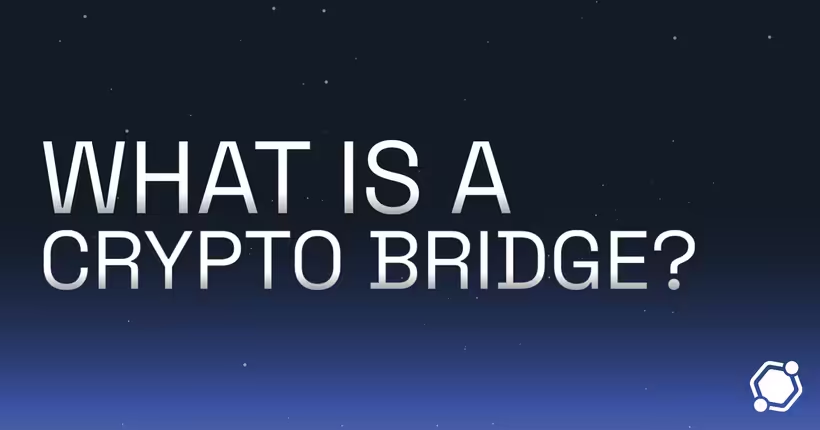
What Is a Crypto Bridge? Simple Explanation
There is more than one blockchain in the crypto world. Ethereum, Bitcoin, Solana, and Binance Smart Chain all have their own ecosystems, apps, and tokens. But what if you want to use your assets on more than one blockchain? That's where crypto bridges come in.
What is a bridge for crypto?
A crypto bridge lets tokens or data move from one blockchain to another. For instance, you have ETH on the Ethereum network and want to use it on the Binance Smart Chain (BSC). A bridge makes that move possible.
Blockchains would stay "islands" if there were no bridges. They can talk to each other and share resources through bridges.
A Simple Comparison: Islands and Bridges
Think of each blockchain as an island with its own rules and money. You would usually be stuck on the island you started on. A bridge connects islands in the same way that a real bridge does.
It lets people (or tokens, in the case of crypto) cross safely. You don't have to give up your assets; you just move them to a new place.
This means that bridges are necessary for interoperability, which is the ability of blockchains to "talk" to each other.
What Are Crypto Bridges and Why Are They Important?
Crypto bridges give users and developers new options:
- Flexibility: Put assets where they will be most usefull
- Lower Fees: Move tokens to chains where transactions are cheaper.
- More Apps to Use: You can use your assets on a variety of DeFi platforms, NFT marketplaces, and gaming ecosystems.
Bridges help blockchains grow beyond their own limits, which is good for the environment. Some famous bridges that are still in use today are:
- Polygon Bridge connects Ethereum to the Polygon sidechain.
- Binance Bridge moves assets from the Binance Smart Chain to other networks.
- Avalanche Bridge lets you move tokens between Avalanche and Ethereum.
- Wormhole is a bridge between multiple chains, including Solana, Ethereum, and others.
Are There Any Risks?
Yes, bridges are strong, but they are also easy targets for hackers. Bridge vulnerabilities were used in some of the biggest hacks in crypto history. Some common risks are:
- There are bugs in the bridge's smart contract code.
- If only a few people control the bridge, there is a risk of centralization.
- Scams that use fake bridges to trick people into using them.
Tip: Before moving assets, always double-check that you're on the official bridge website.
Main Takeaway
A crypto bridge links blockchains so that tokens and data can move easily between networks. Think of it as the network that connects the different parts of the blockchain. Bridges are important for the future of a world with many chains, where apps and assets can work together instead of being stuck in silos.